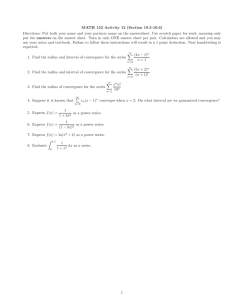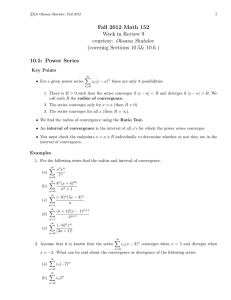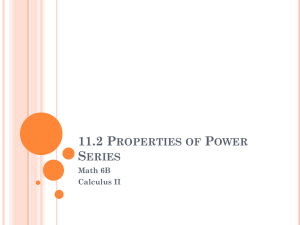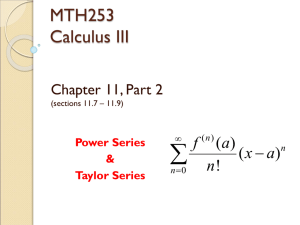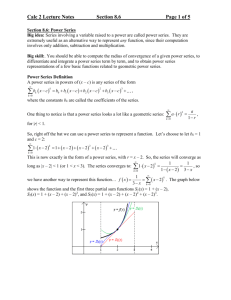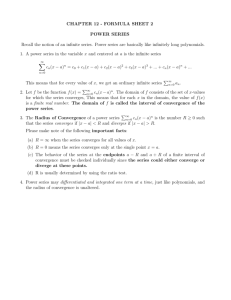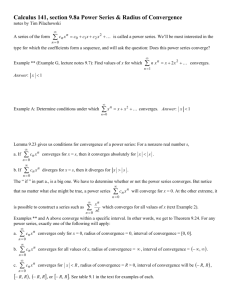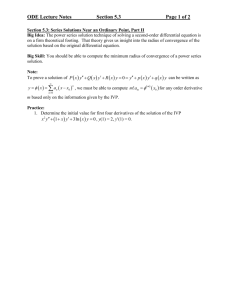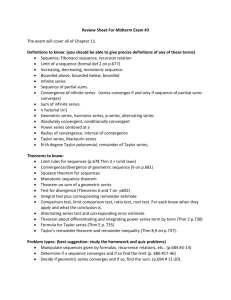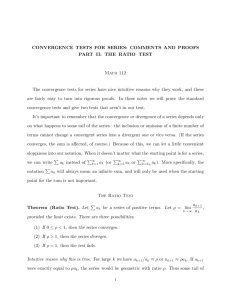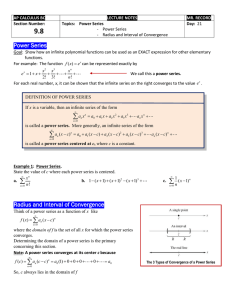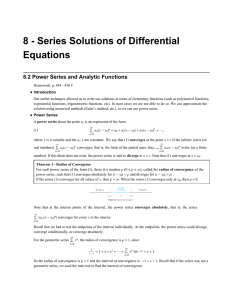MATH 214 Lecture Notes Section 11.8
advertisement
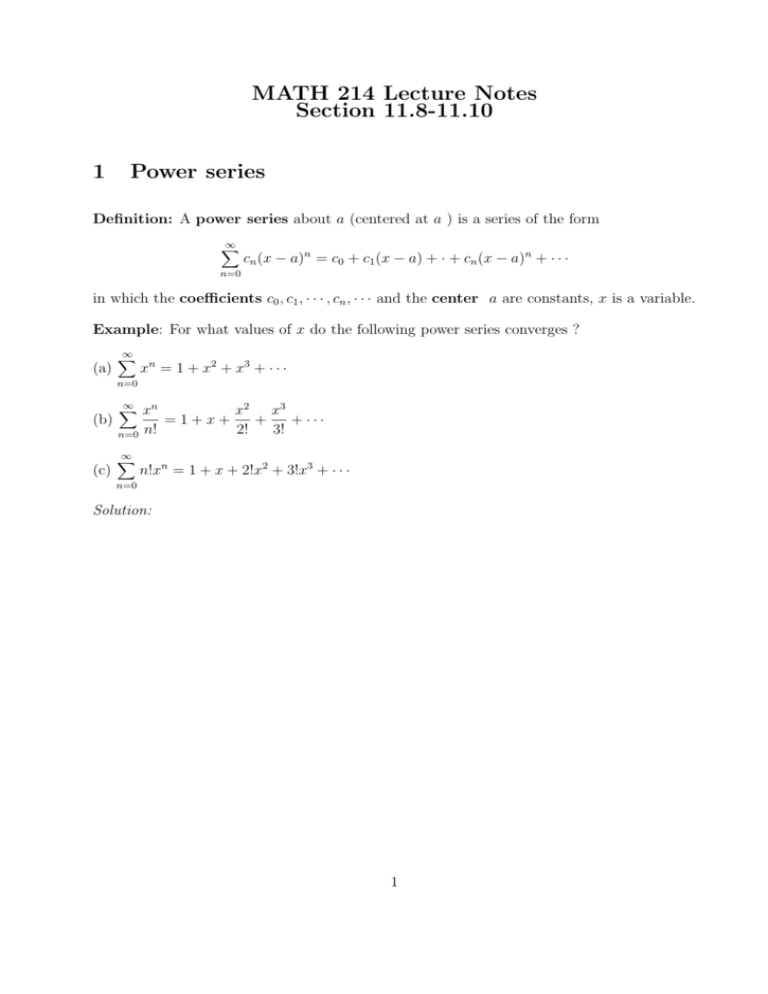
MATH 214 Lecture Notes Section 11.8-11.10 1 Power series Definition: A power series about a (centered at a ) is a series of the form ∞ X cn (x − a)n = c0 + c1 (x − a) + · + cn (x − a)n + · · · n=0 in which the coefficients c0 , c1 , · · · , cn , · · · and the center a are constants, x is a variable. Example: For what values of x do the following power series converges ? (a) ∞ X xn = 1 + x2 + x3 + · · · n=0 (b) (c) ∞ X xn x2 x3 =1+x+ + + ··· 2! 3! n=0 n! ∞ X n!xn = 1 + x + 2!x2 + 3!x3 + · · · n=0 Solution: 1 2 Radius and interval of convergence The convergence of the power series ∞ X cn (x−a)n is described by one of the three possibilities: n=0 (1) There is a number R > 0 such that the series converges if |x − a| < R and diverges if |x − a| > R (2) The series converges absolutely for every x. (3) The series converges only when x = a. The number R in case (1) is called radius of convergence of the power series. By convention, the radius of convergence is R = ∞ in case (2) and R = 0 in case (3). The interval of convergence of a power series is the interval that consists of all values of for which the series converges. Example: Find the radius of convergence and the interval of convergence of the power series ∞ X (−3)n (x − 1)n √ . n+1 n=0 Solution: 2 3 Representations of functions as power series We wish to represent certain types of functions as sums of power series. We start with the power series ∞ X xn = 1 + x + x2 + x3 + · · · n=0 1 This is a geometric series with ratio x. It converges to if |x| < 1 and diverges if |x| ≥ 1. 1−x 1 Thus, the function f (x) = has a power series representation as follows: 1−x ∞ X 1 = xn = 1 + x + x2 + x3 + · · · , 1 − x n=0 |x| < 1 Example (substitution): Express the following function as the sum of a power series and find the interval of convergence. (a) 1 1+x (b) 1 1 + x2 3 4 Term-by-term differentiation and integration Theorem: If the power series ∞ X (x−a)n has radius of convergence R > 0, then the function n=0 f defined by f (x) = c0 + c1 (x − a) + c2 (x − a)2 + · · · = ∞ X cn (x − a)n n=0 is differentiable ( and therefore continuous) on the interval (a − R, a + R) and (1) f 0 (x) = c1 + 2c2 (x − a) + 3c3 (x − a)2 + · · · = ∞ X ncn (x − a)n−1 n=0 Z (2) (x − a)2 (x − a)3 f (x)dx = C + c0 (x − a) + c1 + c2 + ··· 2 3 ∞ n+1 X (x − a) cn . =C+ n+1 n=0 The radii of convergence of the power series in (1) and (2) are both R. Example: Find a power series representation for the following functions. What are the intervals of convergence? (a) 1 (1 + x)2 (b) ln(1 + x) (c) arctan x 4 5 Taylor series Suppose that f is a function that can be represented by a power series f (x) = c0 + c1 (x − a) + c2 (x − a)2 + · · · = ∞ X cn (x − a)n , n=0 which converges in the interval (a − R, a + R) with R > 0. Conducting term-by-term differentiation n times, we obtain cn = f (n) (a) n! Consequently, for x ∈ (a − R, a + R) we have f 00 (a) f (x) = f (a) + f (a)(x − a) + (x − a)2 + · · · 2! ∞ X f (n) (a) n = (x − a) , n! n=0 0 This series is called the Taylor series of f at a. The Taylor series about 0 is called the Maclaurin series. Example: Find the Maclaurin series of the following functions and their radii of convergence. (a) f (x) = ex (b) sin x (c) cos x 5 Example: Find the Maclaurin series of the following functions and their radii of convergence. 2 (a) f (x) = ex (by Substitution) (b) g(x) = 1 − cos x (by Arithmatic Operations) x2 6 Example: Evaluate the indefinite integral Z x5 cos(x2 )dx as an infinite series. 7
